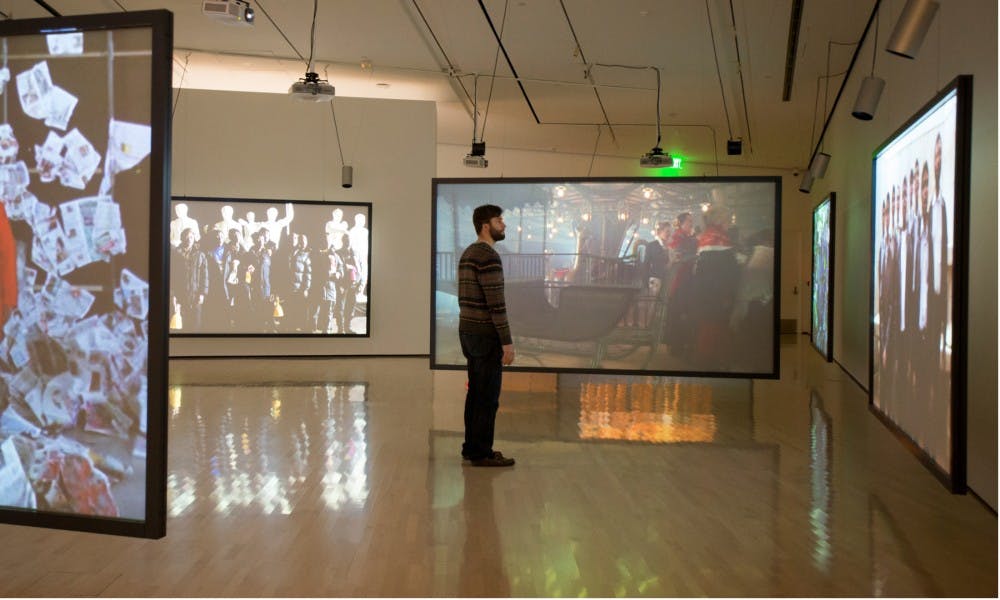Two mirrored rows of screens line the hallway to the main entrance of the Eli and Edythe Broad Art Museum, each one displaying a dizzying array of video art.
Not quite the same as film, video art is a more abstract exploration of both the process of making video and using the medium to create artwork that is otherwise impossible to replicate through other artistic mediums.
This isn't a clear cut definition, in fact, the distinction between film and video art is a central question explored through the exhibit, Caitlin Doherty, Curator and Deputy Director of Curatorial Affairs at the museum, said.
"We are surrounded by the moving image in a way we've never been before...It's therefore particularly important, I think, right now that we focus on video art as an art form and what distinguishes that from other moving images that we're surrounded by," she said.
Originally conceived by Michael Rush, the late director of the Broad Art Museum, the exhibit is the first of its kind in the entire world. No other modern art museum is celebrating the legacy of video art in the way Rush organized it.
However, his sudden passing led to some complications for Doherty.
"I was really challenged with a show of this scale and importance, you know that really should be a two year running show, that's the kind of show you plan two years out," she said.
Even with these limitations, Doherty's team at the Broad was "immediately empowered" to help honor Rush's legacy. Through this commitment, the various exhibits and layout for Moving Time was completed within six months time.
The exhibit lives up to its title as the layout starts the viewer with Andy Warhol and Nam June Paik, considered the founders of the video art movement, whose works are traced back to 1965. Three other rooms branch off from the main landing, taking the patron all the way up to the modern day.
While much of the exhibit's design was formulated by Rush and expanded upon by Doherty, a number of students had a role in conceiving the layout. Rachel Allen, a third year graduate student earning her master's in fine art printmaking, was one such student.
"So what we do is the curators plan the show, they work with the registrar to organize all the videos in the show but then what we're able to do is render the objects as 3D models and we're able to present different options to the curators and/or artists to help imagine what the show is," Allen said.
In addition to student involvement, the Department of English's Film Studies program has been working with the museum to present a series of film screenings called Broad Underground.
The artists selected for the screenings range from currently working ones like Tony Cokes, late American video art pioneers such as Stan VanDerBeek, and foreign directors such as Steina Vasulka.
Film studies professor Justus Nieland said there are several more directors and film selections the Broad Underground intends to screen.
"We hope audiences come away from the screenings with a new appreciation for thought-provoking, unusual, off-beat, politically urgent work," Nieland said.
Support student media!
Please consider donating to The State News and help fund the future of journalism.
Discussion
Share and discuss “Video art exhibit at Eli and Edythe Broad Art Museum first of its kind ” on social media.







